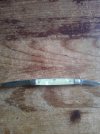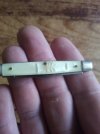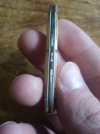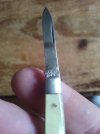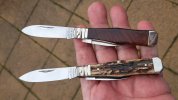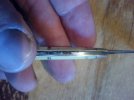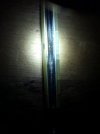- Joined
- Mar 19, 2018
- Messages
- 4,378
So some background. In college while working weekends on my grandfather's then operational dairy farm, my great grandmother passed away. I was then shanghaied on one of those weekends to help clean the garage of her possessions. In my various amblings through assorted boxes I discovered a small collection of knives. An imperial Barlow, a ka-bar hunting knife, and this little single spring 2 blade pen. The hunting knife and Barlow have been in my possession uninterrupted since then. The pen knife had gone AWOL until just yesterday... My dad pulled it out of one of his various stash places and said "Did I show you this one? Don't know where it came from". I told him where it had come from, and brought it home. This came from my mother's dad's side, Otis was killed in a farm accident in the early 70's so I never met the man. I suspect based on the vintage and some of the discoloration on the bolsters that the handle scales are celluloid. I find material exceedingly attractive, it's almost like a horn/MOP cross in color and luster. Also after doing a little scrubbing with some 0000 steel wool and oil it appears that the backspring is cracked in the middle. My question put to those wiser than I is this: Do I make an attempt at crafting a new spring, and re-cover the handle? Do I reach out to one of our fine craftsmen here on the forums for said work? Or do I leave it as is and risk a very lovely and storied knife wasting away to nothing due to the instability of the scales. If there's an acrylic that could match the color, and a new spring could be crafted we'd be talking about something that my potential great grandchildren could carry, and that would be something! I know there's no reason monetarily to take on such a project/restoration, but given the family history involved I'm willing to give it a whirl.